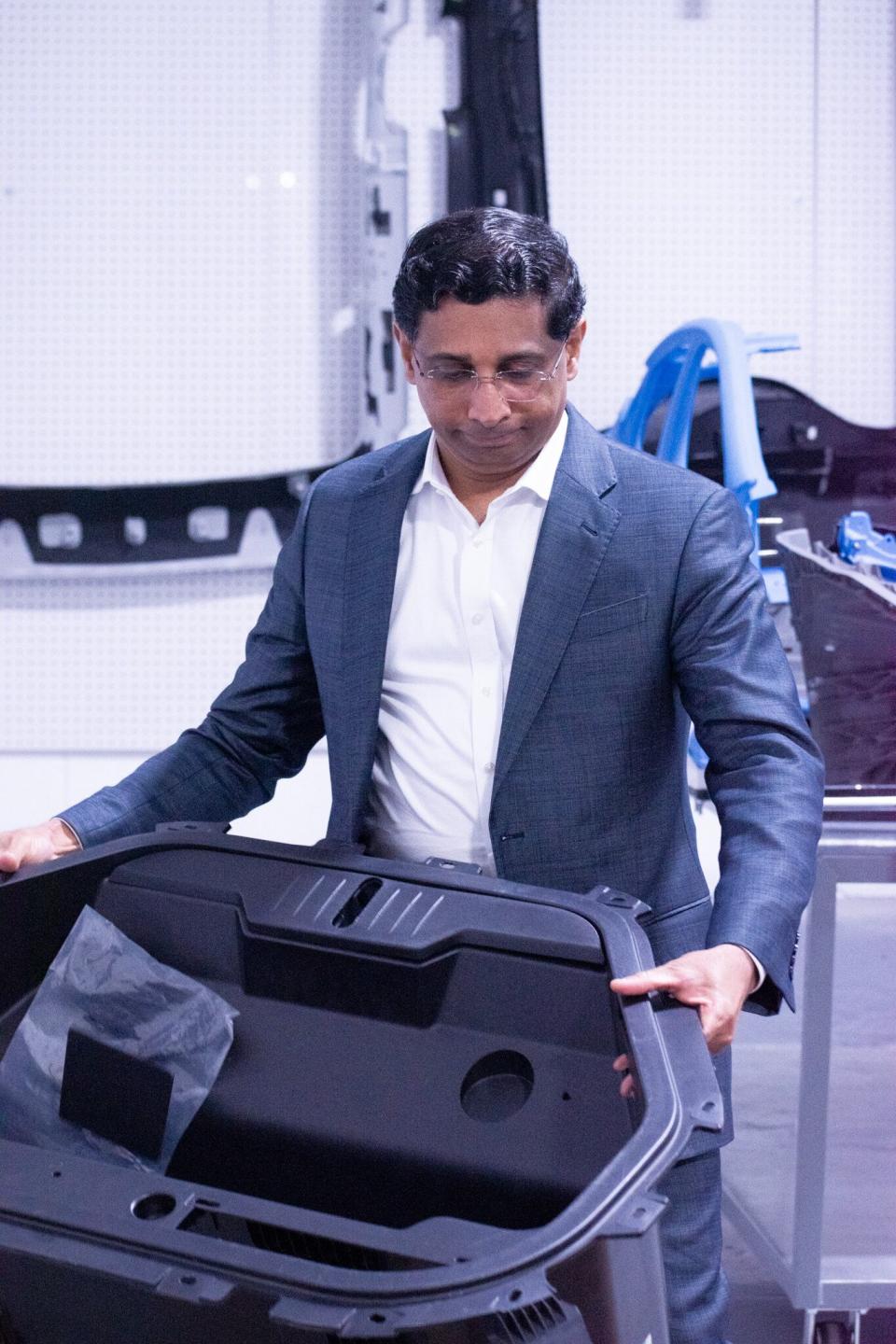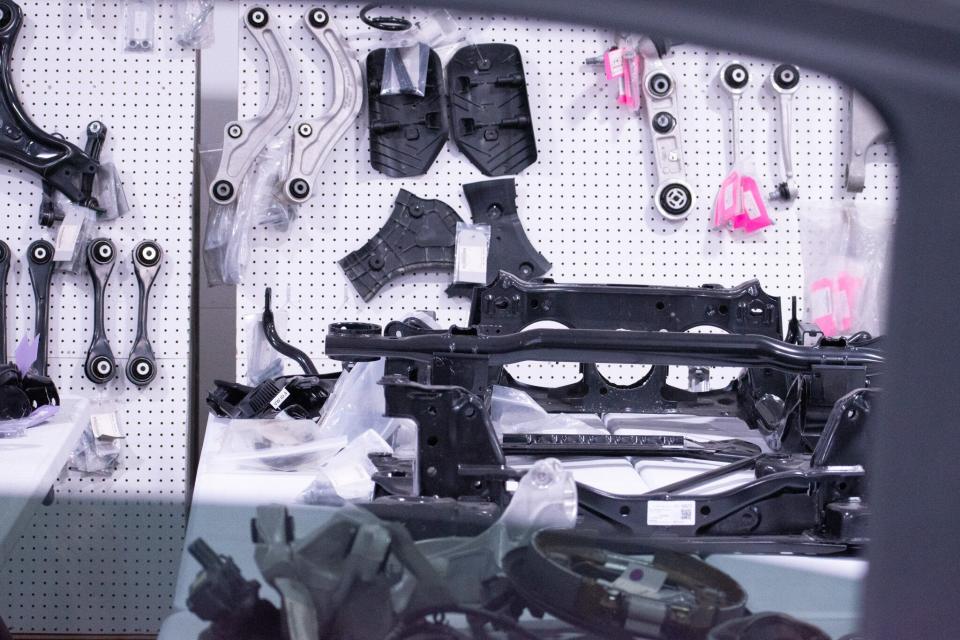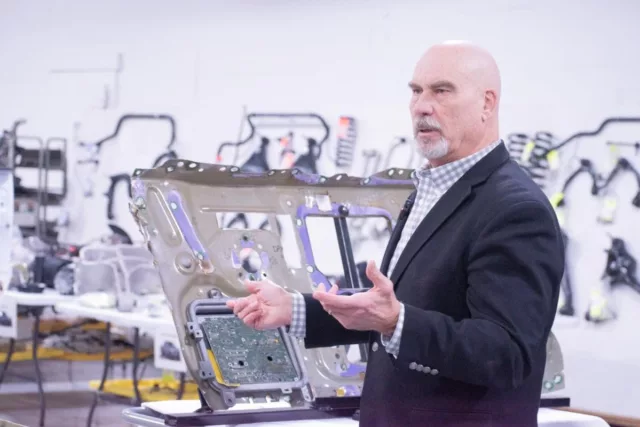DETROIT — To hear Caresoft Global Technologies executives translate what they have seen by tearing down, examining and analyzing the costs of cars from China, the Detroit 3 and many other global legacy automakers are in a brutal battle for survival.
Caresoft is the teardown and product development benchmarking company that won a 2019 Automotive News PACE Award for its process of scanning vehicles and generating engineering and product development data. The company shows its clients — automakers’ executives and engineering managers; suppliers; and others — in granular detail where they are falling behind their competitors.
The news is bad for General Motors, Ford Motor Co. and Stellantis.
Advertisement
Advertisement
Sign up for Automotive News breaking news alerts and be the first to know when big news happens.
The Detroit 3 and other legacy automakers are being outsmarted and outhustled by a creative and hungry Chinese auto industry that works with the nation’s communist government to bolster competitiveness.
The Chinese government, through an organization called the China Automotive Technology & Research Center, works with its homegrown automakers on industrywide standards for common components, a practice that reduces complexity, lowers costs and boosts speed and efficiency by enabling greater parts-sharing among competing brands.
Caresoft CEO Mathew Vachaparampil, in a Feb. 10 presentation to Automotive News editors and reporters, outlined how the Chinese auto industry is aiming its arsenal at three major global markets: Africa, South America and the 10 countries that make up the Association of Southeast Asian Nations.
Advertisement
Advertisement
The China Passenger Car Association says 6.4 million vehicles made in China were shipped overseas in 2024, up 23 percent over 2023.
Chery and BYD were the two fastest-growing brands in Australia last year. Geely was a top 10 brand in 2024 in many Southeast Asian nations. In South Africa, Chinese brands took 9 percent of the market in 2024, up from 2 percent five years earlier. Closer to home, in North America, MG — the former British brand now owned by SAIC — outsold Ford, Hyundai and Honda in Mexico last year.
Vachaparampil believes Chinese automakers aren’t in a hurry to push into the U.S.

Caresoft CEO Mathew Vachaparampil shows how a Tesla Model Y frunk snaps into place using just five pieces. Tesla and other startups, including in China, are unimpeded by century-old methods of vehicle development.
What is far from clear is if GM CEO Mary Barra, Ford CEO Jim Farley and Stellantis leadership can change their companies fast enough to get them in fighting shape for when the Chinese do get here.
Advertisement
Advertisement
Farley acknowledged the challenge Detroit is facing while speaking at a financial conference Feb. 11, saying: “What I’m always amazed at for the last three to four years with the Chinese is their speed. Everyone talks about how good they are, how cheap they are, but what they should be talking about is how fast they are.”
More in Business
The speed at which the Chinese auto industry is moving to incorporate new technologies, improve quality, reduce costs and roll out electric vehicles is leaving legacy automakers in the dust.
“What we see from the Chinese is an existential threat,” former GM manufacturing executive Terry Woychowski, Caresoft’s president, said as he led a tour of Caresoft’s U.S. headquarters in Livonia, Mich. “I think it threatens the existence of some of these companies. I have no idea what will happen five years from now. But I do know what I see, and I can extrapolate. Things are going to change.”
Historical and cultural baggage
Before the pandemic, Caresoft’s facility was a plant that churned out ice cream, milk and other dairy products. Now, it resembles a morgue for disemboweled automobiles. Body parts here, wiring harnesses, HVAC systems and brake parts there. Chassis on the automotive equivalent of gurneys await postmortem inspections. And thousands of other components, laid out on tables or affixed to wall displays, show precisely how and with what parts automakers assemble their vehicles.

At the Caresoft facility, engineers tear down every piece of a vehicle to examine how it is assembled and determine costs. Thousands of components are laid out on tables or affixed to wall displays.
Caresoft engineers say the Detroit 3 have made some initial progress driving down costs, and they have found some evidence of smarter manufacturing. But the automakers aren’t keeping pace with Chinese rivals.
Advertisement
Advertisement
The engineers remove, examine and determine the cost of every item on a vehicle right down to the smallest plastic rivet. These small parts and how they attach often tell big stories.
One Detroit automaker, for example, uses a dozen rare-earth magnets to hold the headliner in place on one of its vehicles. Woychowski says those magnets cost $1 each. Because the roof is made of aluminum, steel brackets have to be riveted in place for the magnets to stick. A Chinese automaker uses simple adhesive strips to hold the headliner in place. Cost: about a penny each.
Another example: the brace that fits behind the instrument panel and bolts below the A-pillars in most vehicles. In Chinese EVs or a Tesla, that brace might be made of plastic or a combination of thin metal with plastic brackets. In a Detroit 3 EV, the brace is likely to be made of thick aluminum, a costly carryover from combustion vehicles. This, Woychowski says, is an example of legacy automakers moving too slowly.
Hungry and hustling
Vachaparampil, who travels to China about 10 times a year, says the government is encouraging the intense competition among automakers knowing that some will die. This winnowing process is expected to yield strong survivors that will eventually be globally competitive in all major markets. The drive to survive is one reason Chinese automakers are innovating and moving so quickly. Vachaparampil recalls a presentation the Caresoft team delivered in China to one of the country’s major automakers.
Advertisement
Advertisement
“It was a Saturday morning, not a working day. There were 700 people in the auditorium,” Vachaparampil said. “You tell me, would anybody in the U.S. do that? That’s the hunger. You can feel the energy when you go to China. It’s a different world.”
It isn’t just Detroit automakers stuck in the slow lane, Vachaparampil says. “If I need to get a meeting with a German OEM, it takes me two months. In China, in one week you are done. It takes nine months to get a purchase order from a legacy OEM. In China, it takes one month.”
Woychowski believes America’s auto industry can rise to the Chinese challenge. He likens the situation to how the U.S. government worked with the industry to produce massive quantities of war materiel during World War II. Part of the fix involves Detroit automakers sharing more commodity parts, such as windshield wiper motors, brake rotors and sunroofs. Higher volume on common components lowers costs.
Another part of the solution has to come from within each automaker. There has to be a willingness, Woychowski says, to learn from the Chinese, Tesla and other startups that are unencumbered by century-old methods of vehicle development.
“Leadership has to create that vision, has to put that inspiration forward and say, ‘Folks, this is why we’ve got to change. I know it’s uncomfortable. I know it’s scary. I’ve got your back. Let’s go do it.’ ”









